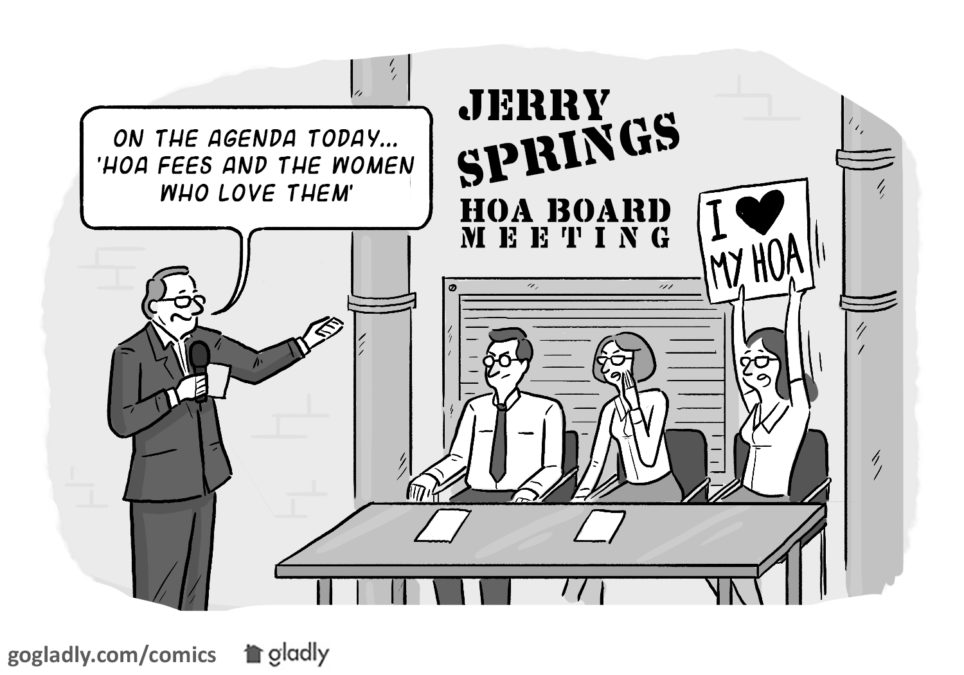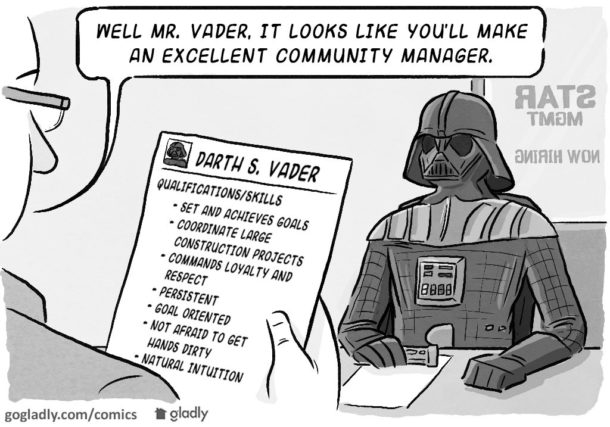The scene was tense, with shouting, threats, and concerns about objects being thrown. Despite repeated pleas for quiet, anger and tension hung over the room. Menacing faces glared at the speaker in front at the head table. Is this a description of the latest episode of the Jerry Springer Show? No, it’s just another dysfunctional association board meeting.
If you serve on the board of a condominium, townhome, or homeowner’s association you may have experienced such a chaotic event. This behavioral phenomenon occurs gradually over time, as homeowners and even some board members are not challenged and corrected on their behavior with regard to HOA meeting conduct. Thus shouting, threats, and yes, even chair throwing are considered acceptable actions.
It does not need to be this way. If your association has fallen into this rut, there are practical and essential steps to regain control.
Stop the Disrupters
Provide the guidelines at the start of EVERY meeting. The board president of our best-run association opens each meeting with an announcement to this effect: “Before we start, I want to explain how we conduct the meeting. First, the Board will conduct our routine business. You are welcome to observe and take notes, but please hold your questions. When the business portion of the meeting is done, you will have an opportunity for comments and questions.”
The business meeting should follow a set format, such as the following:
- Call to Order
- President’s Report
- Approval of Minutes
- Treasurer’s Report
- Management Report
- Old Business
- New Business
After the conclusion of New Business, if there is no other business to conduct, the Q&A portion of the meeting begins. Again, it is best to remind the members of the HOA meeting conduct guidelines, with instructions such as: “Now we will open up the meeting to questions from homeowners. So that everyone has an opportunity, please limit your comments and questions to 5 minutes. In addition, please state your name and unit address before you start your comments.” This provides more behavioral boundaries and stating their name and address also reinforces accountability for their comments.
Many associations also provide a time limit for the Q&A period, usually no more than 20-30 minutes, unless a controversial issue (i.e., special assessment) is being discussed.
To further emphasize the “board members only” comment rule during the business portion of the meeting, it is helpful to place the tables in front of the meeting room in a u-shape, so that the Board is facing each other and not directing their comments to the audience. The open end of the U should face the audience, but they will only be addressed directly during the Q&A session.
The Outcome
If your association has grown accustomed to out of control meetings, it may take several reminders to enforce this behavior. It is important to be vigilant about enforcement and not allow out-of-turn comments. As stated before, the behavioral guidelines for HOA meeting conduct should be stated before EVERY meeting. Each meeting may have new homeowners in attendance who are not aware of proper HOA meeting conduct. Repeating the guidelines also enforces that the board is serious about enforcement and will not allow exceptions.
Finally, for homeowners who refuse to comply, even after a reminder, there is a simple process: (1) tell them that further disruptions will cause the meeting to be adjourned, and if they persist, (2) adjourn the meeting. If a disruptive homeowner still refuses to leave, call the police. Security may be required at future meetings until the guidelines are followed. Fortunately, this extreme step is seldom necessary.
If meeting behavior is not a problem for your association, be thankful. But if your meetings have grown out of control, this process will get them back on track. You never know, Jerry Springer may even be calling you for advice.
- Desperately Seeking Conflict - June 14, 2019
- The Role of HOA Management — Hang Up Your Super Suit - December 13, 2018
- Jerry Springer is NOT on the Agenda!
Taking Control of HOA Meeting Conduct - May 16, 2018



 Help
Help
The company I work for has a client who had to have a uniformed police officer at every annual meeting because of one violently disruptive homeowner who lived there for more than two decades. Board meetings were held in Board member homes, and each Board member flat out informed the violent homeowner that while his wife or any other representative of his choosing could visit their homes to attend meetings, he himself was not welcome in their homes and they would call the police if he pushed them to it. Very briefly one or two had restraining orders so he could be arrested for stepping on their limited common area entry walkways, but once he was read the riot act by an officer at the SECOND meeting he tried to disrupt, he restrained his outbursts to any time anyone stepped onto his own limited common area. Other than our phone lines, of course, but we wouldn’t let him abuse us, either.
I would make some changes to this if it was an Association that has issues. I would NOT allow for a Q&A session at the Board meetings. Do what we did with one of our communities. Hold “Board Meetings” at 7 a.m. Use those to do business. Yes, depending on the State you are in, there may be open meeting laws so the meetings need to be open to membership and be on websites, newsletters and/or other notification so you let people know when they are. However, doing the meetings early in the morning drastically limits or even eliminates most people from attending. Then, if you are doing this, hold regular town hall meetings to discuss what is going on in the Association and do those in the evenings when most people can attend. Allow for member questions and feedback in that environment. In the case of my one client that has done this, they actually do Board meetings every other Friday at 7 a.m. and then every month or two they hold a town hall meeting in the evening. They do monthly newsletters and make sure communication is constantly happening so people are informed.
My main point: don’t do Q&A in a Board meeting at all if there are known issues with members.